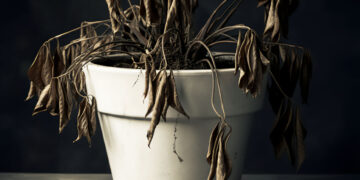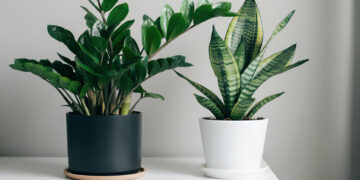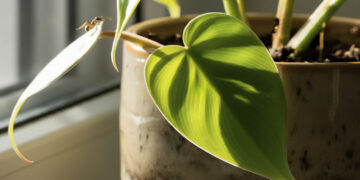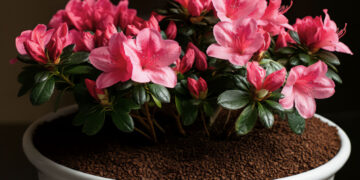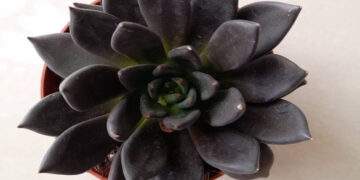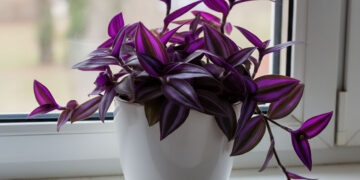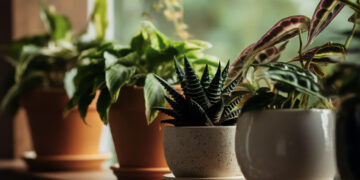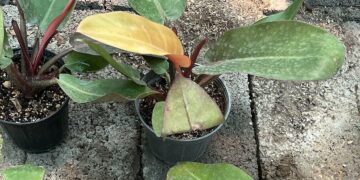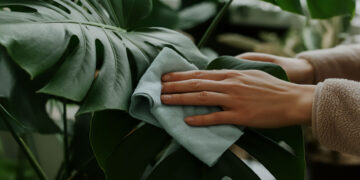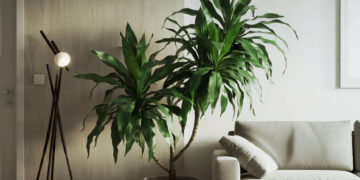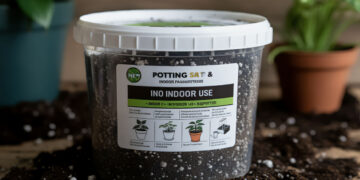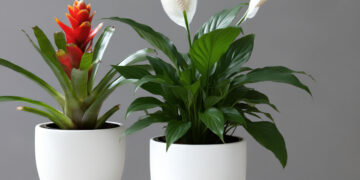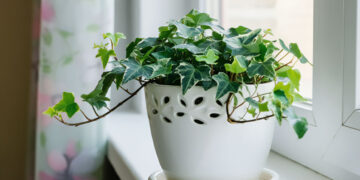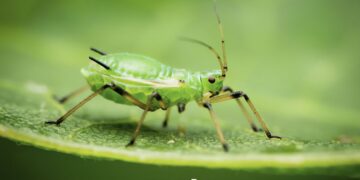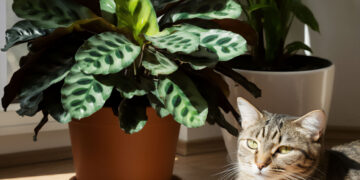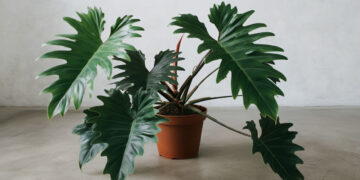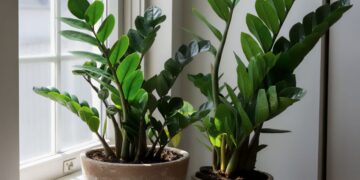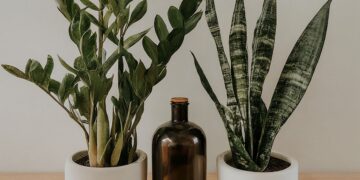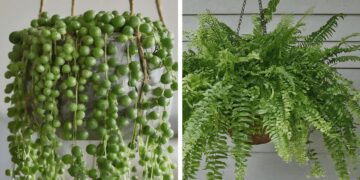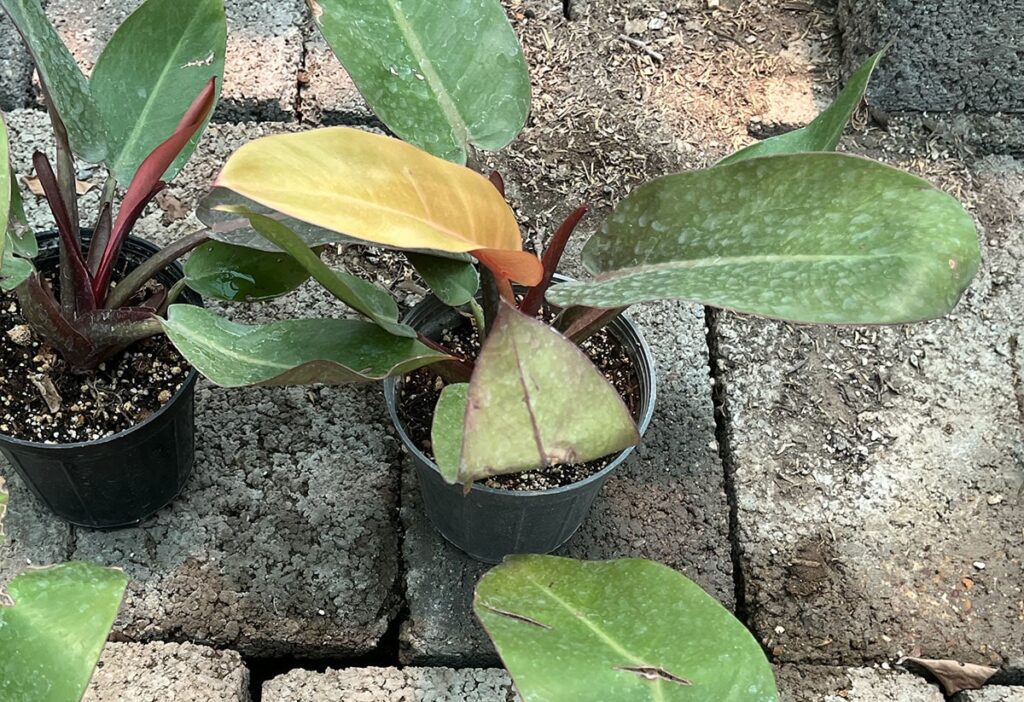
Before anything else, know that if most of the leaf is yellow, it’s better to cut it off, especially if it looks unhealthy. However, if only a small tip of the leaf is yellow and the problem is resolved, you can keep it. This helps the plant conserve energy and focus on growing healthy leaves.
1. Overwatering
Cause
The most common reason for yellowing houseplant leaves is overwatering. When the soil is too wet, the roots can’t get enough air, which eventually leads to root rot.
Fix
Let the soil dry out before watering again. I personally stick a piece of wood or my finger into the soil; about one inch of soil should be dry, or You can also tell by weighing the pot, which is a special method moms use :)). Ensure your pot has drainage holes. If the plant’s condition is bad, root rot may be present, and you’ll need to remove the plant from its pot, trim the damaged roots, and replant it in fresh, well-draining soil.
2. Water Quality
Cause
Some plants are sensitive to tap water because it may contain chlorine, fluoride, or minerals that build up in the soil, causing the edges of leaves to turn yellow or brown.
Fix
If you’re using tap water, let it sit overnight to allow the chlorine to evaporate, or you can use distilled or rainwater.
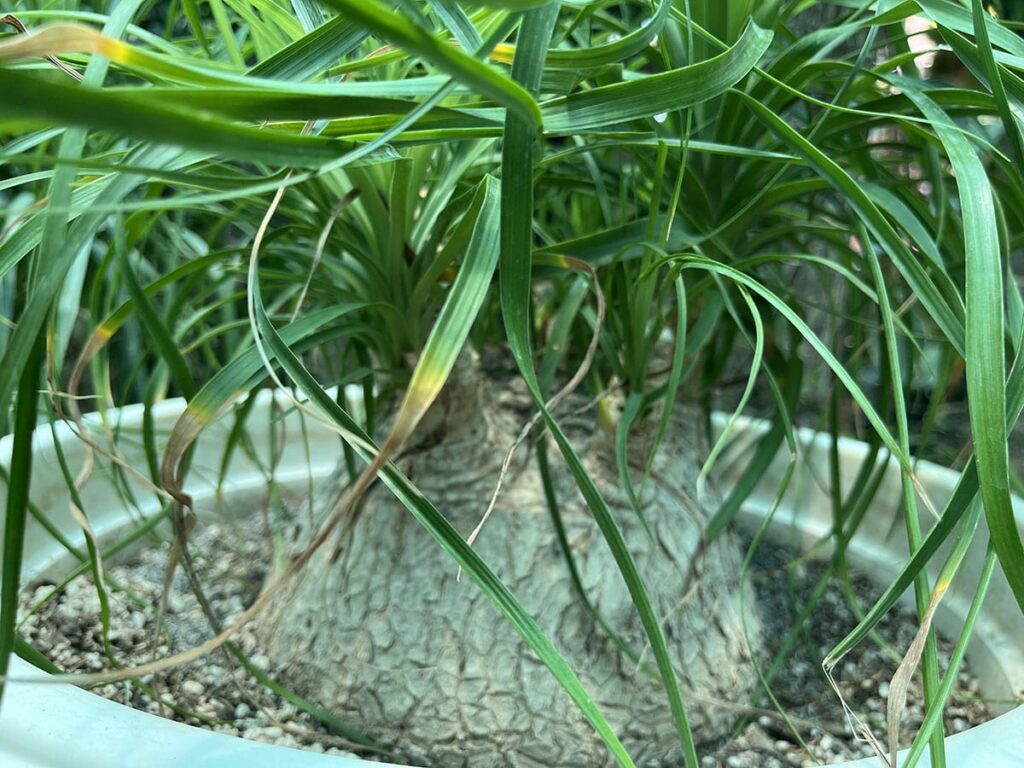
3. Underwatering
Cause
Lack of water can also cause leaves to yellow because the plant struggles to transport nutrients. However, this problem is much less common than overwatering.
Fix
Most houseplants need watering every one to two weeks, so you should plan accordingly. Alternatively, you could opt for hardier plants like ZZ plant or snake plant, which are much easier to care for. In summer, plants generally need more water (though it also depends on the humidity), while in winter, they need less. Use the same method to check soil moisture.
4. Poor Lighting
Cause
Both too little and too much light can cause leaves to turn yellow. Low light reduces chlorophyll (the green pigment in leaves), and too much light can burn the leaves.
Fix
Adjust the light according to your plant’s needs. Low-light houseplants should be in shaded areas, while bright-light plants should be near windows. Rotate your plants regularly to ensure they get even light. Grow lights can also help if you don’t have enough natural light.
5. Nutrient Deficiency and Overfertilization
Cause
A lack of essential nutrients like nitrogen, iron, or magnesium can cause yellowing leaves. On the other hand, overfertilizing can burn the roots, causing yellow or brown leaf edges.
Fix
Most houseplants need fertilizing every 4 to 6 weeks during spring and summer, their growing season. If nutrients are lacking, use a balanced, water-soluble fertilizer for houseplants. If you’ve overfertilized, flush the soil with water to remove the excess fertilizer.
6. Temperature Stress
Cause
Extremely high or low temperatures can cause yellowing leaves. Make sure you understand your plant’s natural needs. For example, tropical houseplants like Boston fern and spider plant don’t like the cold or being near heating vents.
Fix
Most houseplants grow in temperatures between 18°C and 24°C (65°F to 75°F). Avoid placing plants near windows or doors where there is a significant temperature difference compared to the indoor environment.
7. Low Humidity
Cause
Dry air, especially in winter, can cause yellow and crispy leaves in humidity-loving plants.
Fix
Increase humidity with a humidifier, grouping plants together (a simple and effective method), or placing pots on trays with water and pebbles. Misting leaves can also help, but avoid leaving water on them for too long, as this can lead to fungal problems.
8. Soil Issues
Cause
Poor-quality soil, unsuitable for the plant, or compacted soil can prevent root growth, causing yellow leaves. Additionally, imbalanced soil pH can interfere with nutrient absorption, leading to yellowing leaves.
Fix
Repot your houseplant in high-quality, well-draining soil suited to the specific plant. Adding perlite or sand can improve aeration and drainage, helping the roots grow stronger. Test the soil’s pH with a home kit. To lower pH, add sulfur or peat moss, and to raise it, use lime. Regularly check the pH to ensure your plant is absorbing nutrients properly.
9. Rootbound Plants
Cause
When a plant’s roots become tangled and grow out of the drainage holes, they can’t absorb enough water and nutrients, leading to yellow leaves.
Fix
Repot the plant into a larger container and gently loosen the roots to encourage new growth. Use fresh soil and ensure the new pot has good drainage.
10. Natural Leaf Shedding
Cause
As plants grow, older leaves at the bottom may naturally turn yellow and fall off.
Fix
This is completely normal and doesn’t require any action. However, removing yellow leaves can improve the plant’s appearance and encourage better growth, as mentioned earlier.
11. Pests and Diseases
Cause
Houseplant pests like spider mites, aphids, and others suck the sap from the plant, weakening it and turning the leaves yellow. Fungal or bacterial infections can also cause yellow spots.
Fix
Regularly inspect your plants because some pests are very small. Treat pests with insecticidal soap or neem oil. If one plant is infected, isolate it to prevent spreading. Use fungicides for fungal infections.
12. Chemical Exposure
Cause
Household chemicals such as cleaning products or pesticides, can damage plant leaves, causing yellowing or spotting.
Fix
If this happens, wash the leaves thoroughly to remove any chemical residue.
13. Acclimation Stress
Cause
When you bring a new plant home, it may turn yellow as it adjusts to its new environment.
Fix
Give the plant time to adjust without making any major changes to its care. Avoid moving or repotting the plant during this adjustment period.
14. Pot Size
Cause
A pot that’s too big or too small can cause problems with moisture retention and root health, leading to yellow leaves.
Fix
Repot your plant into a properly sized container with good drainage. A pot that’s too large retains too much moisture, while one that’s too small restricts root growth.
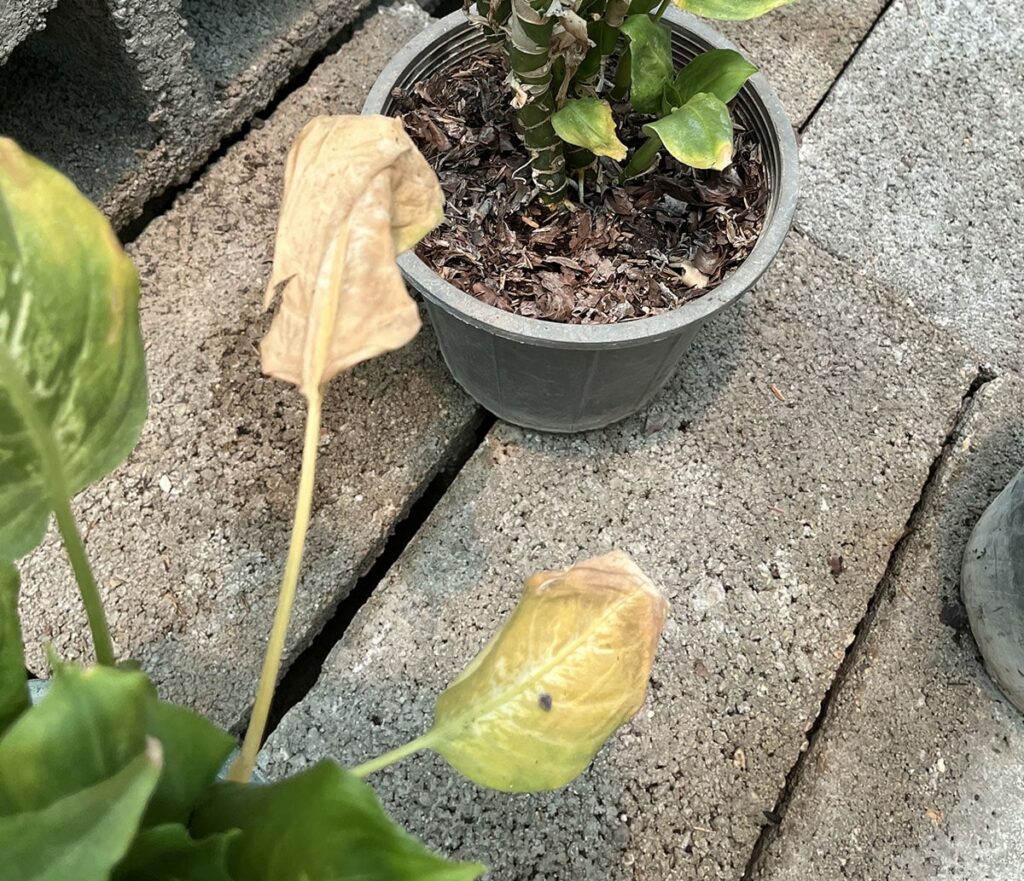
If you need help or have any questions regarding why indoor plant leaves turn yellow, do tell me in the comments.
source:
